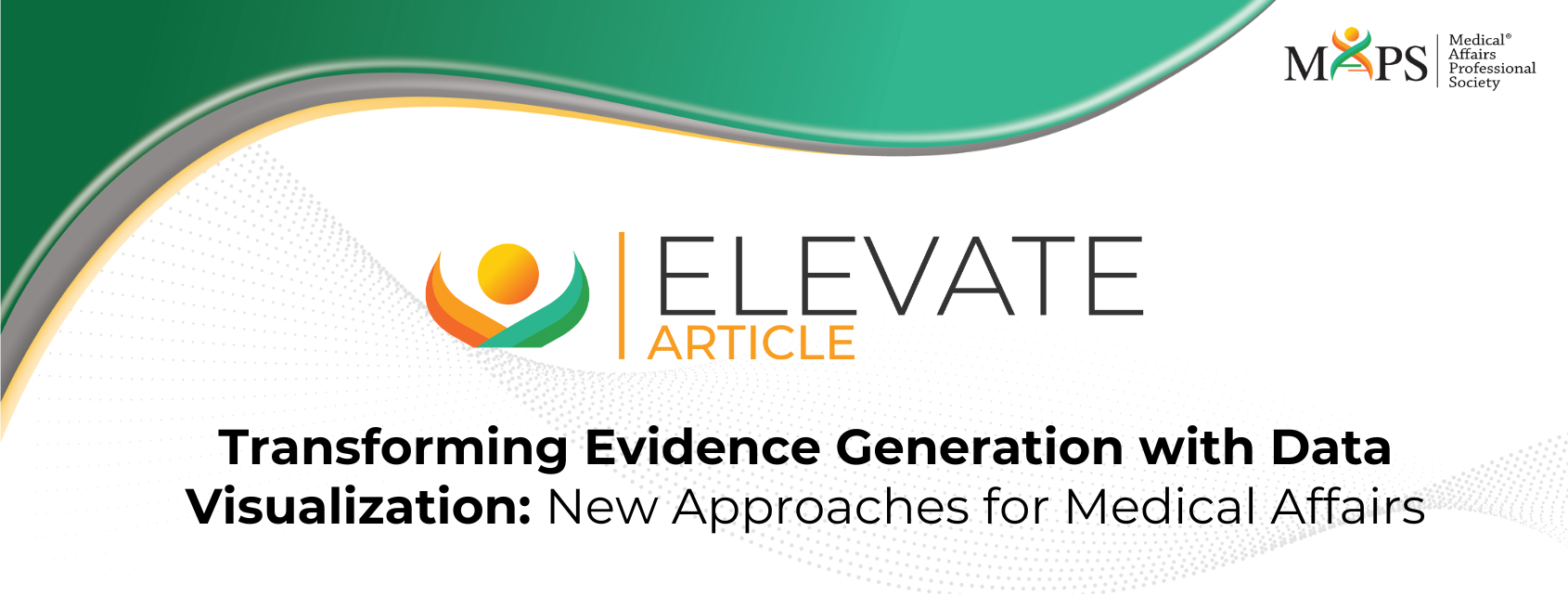
Introduction
As evidence generation becomes more advanced and integrated into Medical Affairs strategic plans, there is a greater need to maximize the impact of this research through new possibilities in scientific communication. One element of successfully communicating complex clinical and nonclinical data is visualization, and especially data visualization using emerging digital technologies.1 Data visualization draws on a variety of disciplines, combining elements of statistics, programming, computer science, operations research, graphic design, and data science – along with expertise in technology, data architecture, clinical acumen, medical governance and more. Data visualization is the representation of data through use of common graphics, such as charts, plots, infographics, and even animations.2 The value of data visualization is that it allows complex relationships to be represented in a way that is easy to understand. This Elevate article will discuss the increasing demand for visual communication and offers a best practice format for data visualization in publications, medical information, and scientific communications, with examples of visually rich content that have driven success in communication, education, and knowledge management.



